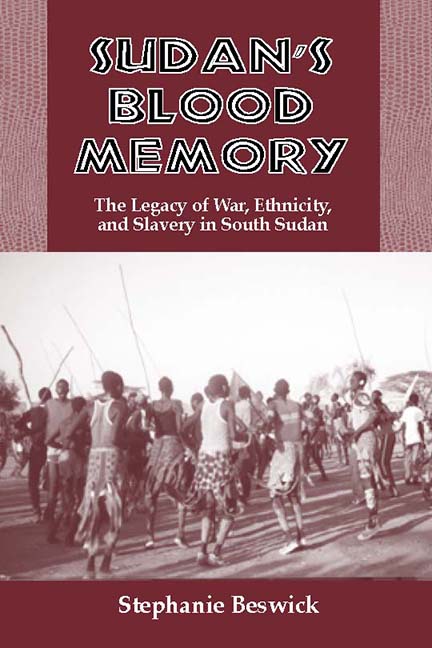Book contents
- Frontmatter
- Dedication
- Contents
- Maps
- Preface
- Acknowledgments
- A Note on Orthography and Languages
- A Note on Sources
- Map
- 1 Introduction
- 2 Geography and Brief History of Sudan
- 3 The Changing Nilotic Frontier
- The Ethno-Historical Formation of Southern Sudan
- 4 Slave Raids, Wars, and Migrations
- 5 Communities of the Sobat/Nile Confluence: The Padang
- 6 Communities on the Eastern Nile: The Bor
- 7 Communities in the Southwest: The Southern Bahr el-Ghazal
- 8 Communities in the Northwest: The Northern Bahr el-Ghazal
- The Ascendancy of the Dinka in Southern Sudan
- Foreign Intrusion and Its Consequences
- Notes
- Glossary
- Bibliography
- Index
7 - Communities in the Southwest: The Southern Bahr el-Ghazal
from The Ethno-Historical Formation of Southern Sudan
Published online by Cambridge University Press: 23 July 2019
- Frontmatter
- Dedication
- Contents
- Maps
- Preface
- Acknowledgments
- A Note on Orthography and Languages
- A Note on Sources
- Map
- 1 Introduction
- 2 Geography and Brief History of Sudan
- 3 The Changing Nilotic Frontier
- The Ethno-Historical Formation of Southern Sudan
- 4 Slave Raids, Wars, and Migrations
- 5 Communities of the Sobat/Nile Confluence: The Padang
- 6 Communities on the Eastern Nile: The Bor
- 7 Communities in the Southwest: The Southern Bahr el-Ghazal
- 8 Communities in the Northwest: The Northern Bahr el-Ghazal
- The Ascendancy of the Dinka in Southern Sudan
- Foreign Intrusion and Its Consequences
- Notes
- Glossary
- Bibliography
- Index
Summary
The land east of the Nile could not accommodate the growing populations of Dinka clans, and thus many crossed the Nile at what is now the modern town of Bor over to its western banks, while others crossed from a point further north. Some settled immediately on the opposite banks of the Nile while other clans then forged northwest, some as far as three hundred miles. Today all of the Dinka west of the Nile are known as the Bahr el-Ghazal (named after the modern-day province) or “Western” Dinka and they comprise ten major sections, the Ciec, Aliab, Apak-Atwot, Agar, Pakam, Gok, Western Luaic, Rek, Malwal, and Western Twic. The Dinka of this vast region can be broken into two groups; the Southern Bahr el-Ghazal and the Northern Bahr el-Ghazal, the dividing line being the types of soils and land into which these various clans migrated.
The land in the southern Bahr el-Ghazal is by far the richest in the whole Dinka confederation, and thus more wars and less ethnic integration of “foreign” peoples (with the exception of the Aliab who are not in such rich territory) mark the history of these peoples. In specific terms the fertile soils afforded these Dinka the opportunity to grow large quantities of their favorite crops much coveted by other Dinka. Thus, by today's standards these Dinka are considered the richest of the whole confederation. Those groupings living in the southern territories are from east to west the Ciec, Aliab, Apak-Atwot, Agar, Pakam, and the Gok. The Ciec territory was the first land into which those from the east migrated.
The Ciec Dinka
Today the Ciec reside on the western banks of the Nile near the modern towns of Shambe and westwards toward Yirol. They comprise two major sections, the Ciec-Lou and the Ciec-Ador. These folk claim that, en masse, they acquired their name from the Dinka word for “bee,” for in the region of the Lou (Pagarou) there were many of these creatures. They believe that their ancestors resembled bees for they “were unified in searching for their own food.” The Dinka claim that the ancient father of all of the Ciec Dinka clans was Manyiel Tiop (tiop means the land where one is buried).
- Type
- Chapter
- Information
- Sudan's Blood Memory , pp. 64 - 78Publisher: Boydell & BrewerPrint publication year: 2004



